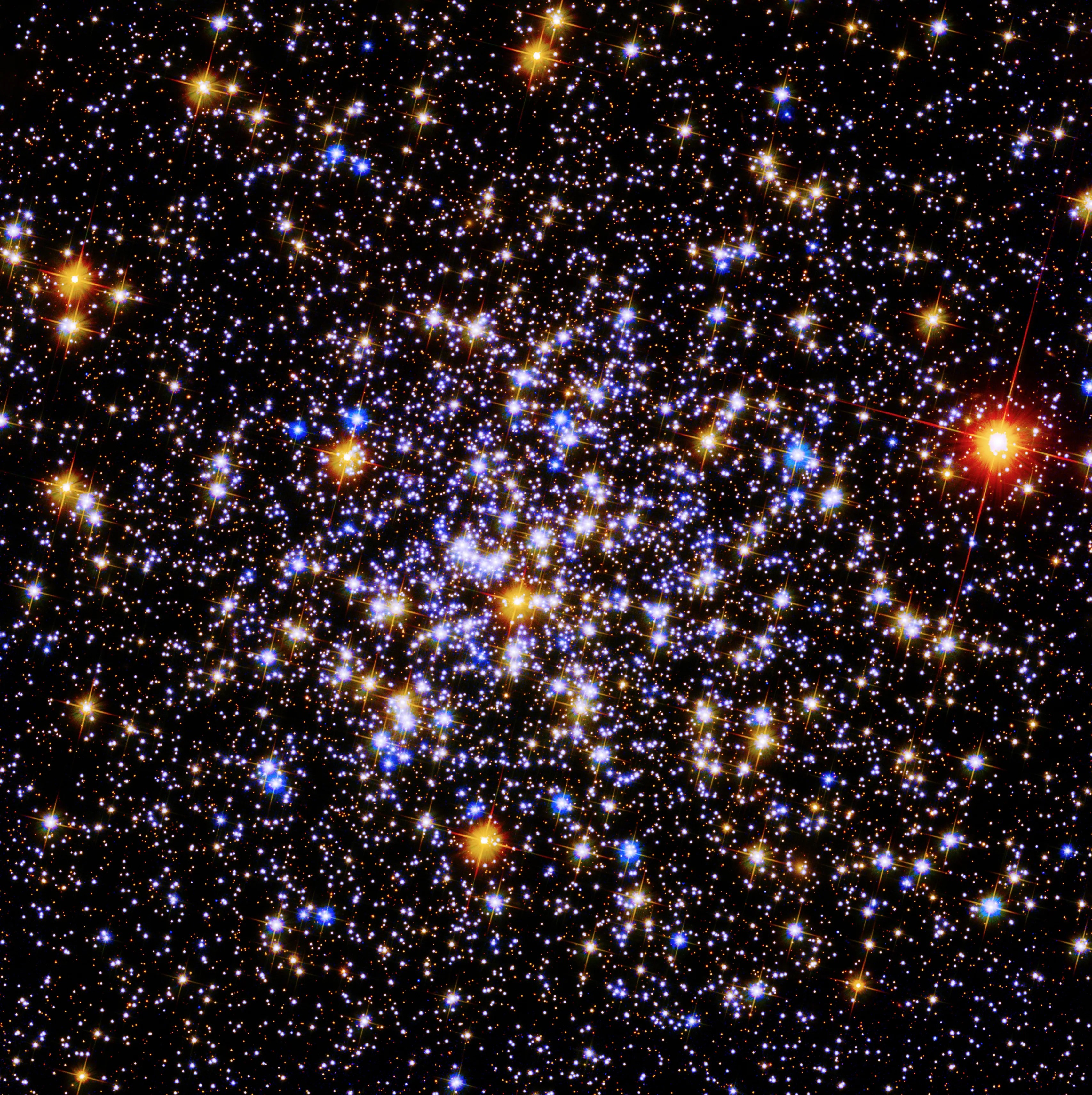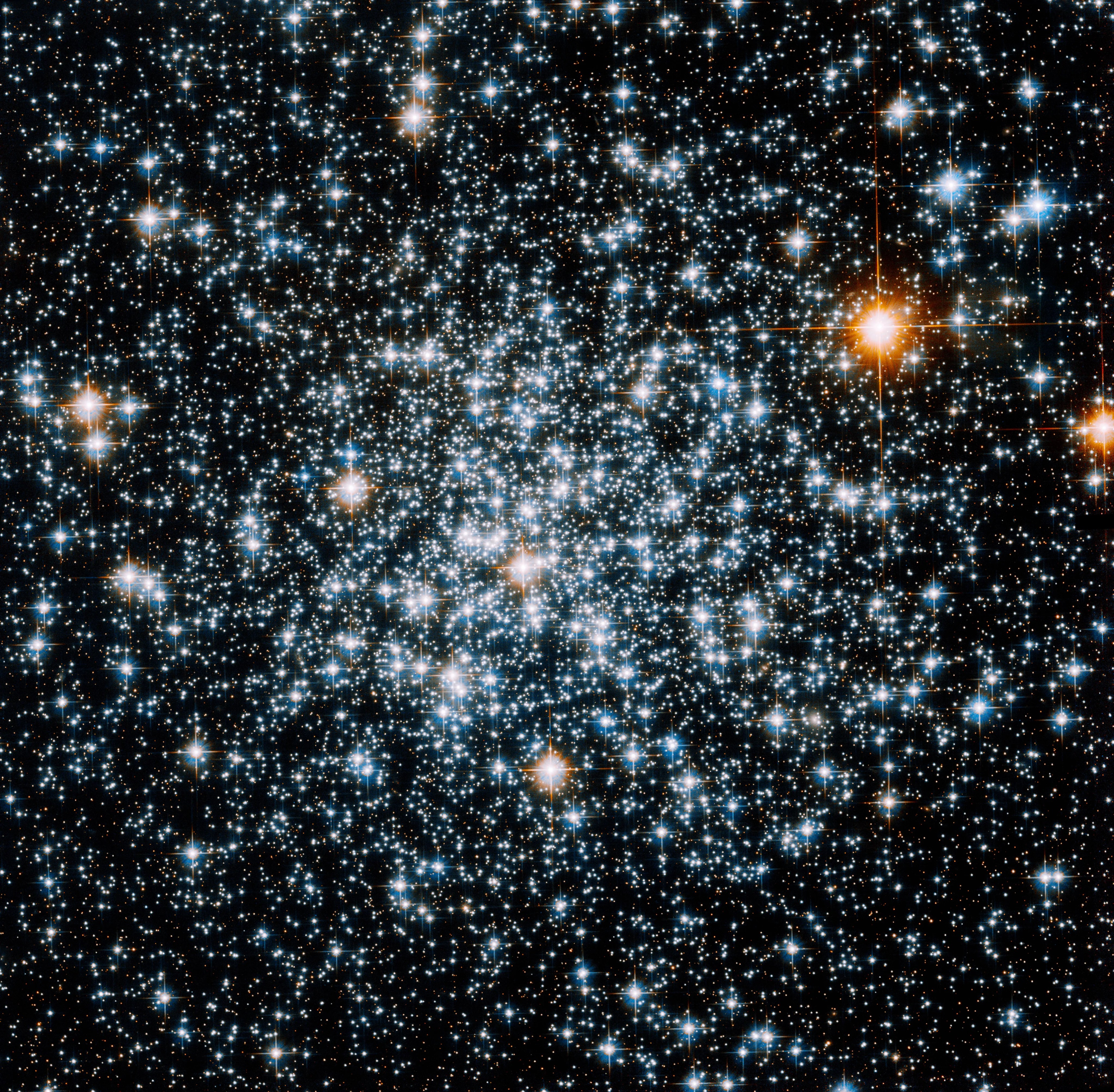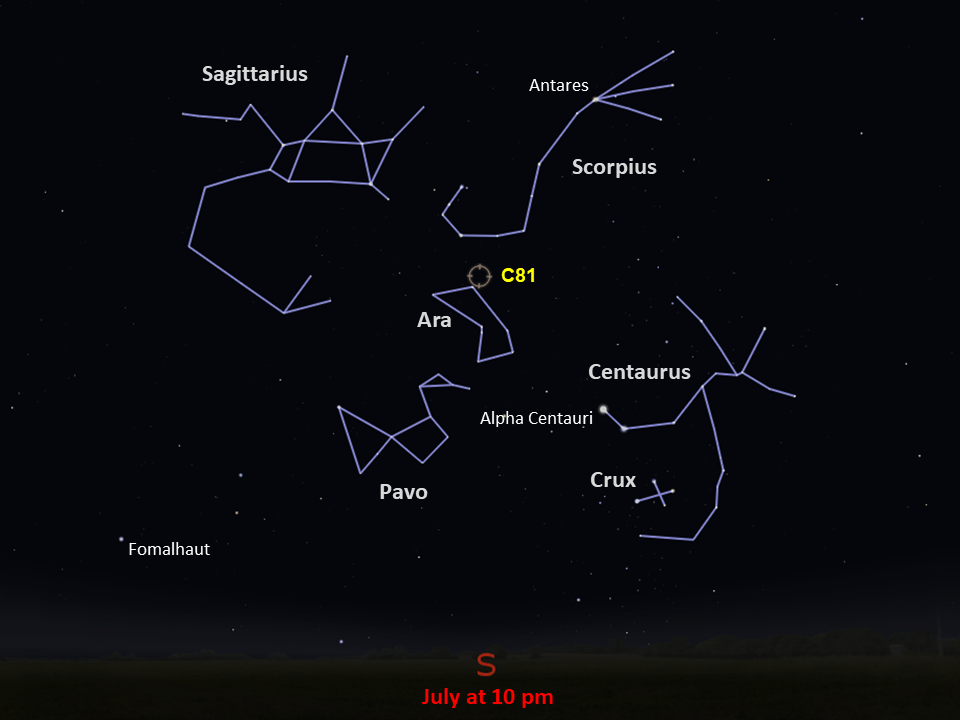Caldwell 81
Located in the constellation Ara, the Altar, Caldwell 81 was discovered in 1826 by Scottish astronomer James Dunlop while he lived in Australia.
Distance
20,000 light-years
Apparent Magnitude
7.8
constellation
Ara
object type
Globular Cluster

Caldwell 81, or NGC 6352, is a loose globular star cluster located roughly 20,000 light-years from Earth. This cluster is located in the constellation Ara and was discovered in 1826 by Scottish astronomer James Dunlop while he lived in Australia. With an apparent magnitude of 7.8, Caldwell 81 can be found with a small telescope. The cluster is best viewed in the Southern Hemisphere during winter but can also be observed from equatorial latitudes in the Northern Hemisphere during its summer.

This image of Caldwell 81 is a composite of visible and infrared observations using Hubble’s Advanced Camera for Surveys and ultraviolet observations using its Wide Field Camera 3. These observations were made to help astronomers understand the characteristics of the cluster’s stars and investigate the evolution of globular clusters. The researchers were able to track the motion of the stars in the cluster and better determine Caldwell 81’s age, which is roughly 12 billion years.

Glossary
Apparent Magnitude - The brightness of an astronomical object as seen from Earth, influenced by the object's distance from Earth, its absolute magnitude, and even gas and dust that lie between the object and Earth.
Globular Cluster - A spherical group of stars that are gravitationally bound to each other, with most of the stars concentrated at the cluster’s center.
Explore Hubble's Caldwell Catalog
The following pages contain some of Hubble’s best images of Caldwell objects.

Caldwell 1
Also known as NGC 188, this group of stars formed from a large cloud of gas making the stars roughly…

Caldwell 2
This shell of gas is expanding outward, away from the dying star within.

Caldwell 3
This barred spiral galaxy was first spotted by British astronomer William Herschel in April 1793 in the constellation Draco.




